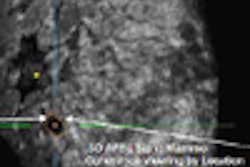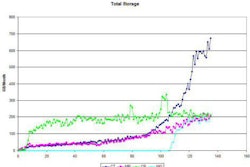Jeffrey W. Breedlove knows one thing for sure. Any information technology system is only as good as the information that's entered into it. He shares his experiences implementing voice recognition and PACS at a community hospital in North Carolina.
As the PACS administrator for the 150-bed Haywood Regional Medical Center in Clyde, NC, he makes note of the old adage "Garbage in, garbage out," which he finds is also applicable to voice recognition technology and PACS.
Haywood went live with its PACS in August 2004, and adopted its automated reporting and voice recognition technologies one year later. Included in its IT renovation was a network upgrade of cable lines and switches to hasten the transmission of larger patient files to radiologists.
The facility produces 80,000 to 90,000 images per year, approximately 3,800 of which are MRI and 14,500 are CT images. This past May, the facility installed a 64-slice CT scanner, and a second MRI system is set for installation by the end of 2007. Currently, only mammography at Haywood is not digital.
Report turnaround
Haywood's primary reasons for the adoption of automatic reporting and voice recognition were its need for faster report turnaround times for referring physicians and quicker access to current and prior exams in Haywood's archives. An added bonus for radiologists has been fewer calls from physicians looking for those reports.
"Prior to going to voice recognition, radiologists spent approximately 15% to 18% of their day answering phone calls from referring physicians about 'Did you read this exam yet? What did you think about this exam?'" Breedlove said. "That disrupts workflow."
He presented the results of Haywood's transformation during the annual meeting of the Society for Imaging Informatics in Medicine (SIIM) in Providence, RI, last month.
Following VR implementation, report turnaround times have improved dramatically. "We worked with a 12- to 18-hour report turnaround time. With voice recognition, automated reporting, and Web distribution, I now have report turnaround time -- from the time the exam is completed -- of about 13 minutes," Breedlove said. "The overall average turnaround time for the entire department is between 30 and 40 minutes from the time the exam is concluded."
In some cases, the ER has the report before the patient is back in the ER after an imaging exam.
Greater capacity
One key element of Haywood's strategy to increase productivity and reduce the amount of time radiologists wait for report retrieval from its PACS was the upgrade of network capabilities. The facility changed from 100-megabits per-second switches to 1-gigabit (Gb) switches, gaining a 10-fold increase in transfer speed. Haywood also installed new cable lines to accommodate as many as 10 Gb per second. While that kind of speed and capacity is not needed currently, Haywood figures technology will advance to that point in the future, and the facility will be ready in advance.
Breedlove has seen first-hand the benefit for radiologists. He literally sat with a stopwatch in the radiology department to see how long it would take a case to appear on a monitor after the radiologist called for the images. Prior to the network enhancement, it took 15 to 20 seconds for the file to reach the radiologist's monitor. The network upgrade reduced that time to 2 to 3 seconds.
"You'd think that 10 to 15 seconds does not make that big of a difference in the overall scheme of things, but think about 80,000 to 90,000 exams per year and multiply that by 15 seconds," Breedlove said. "It works out to approximately 333 hours of productivity per year."
Given that kind of time saving and productivity, he said the $20,000 investment for the network upgrade was money well spent.
Behavior modification
Implementation of voice recognition technology, Breedlove admitted, was not simple or easy. "It took a lot of patience on the radiologist's part, and you know that radiologists are some of the most patient people in the world," he added tongue-in-cheek. "With patience and practice, the radiologists learned to slow down (their speech) just a little. The more that they trained the system, the better it would recognize their speech, the easier it would flow for them, and their speed would pick up."
Haywood utilizes Dragon NaturallySpeaking 9 speech recognition software from Nuance Communications of Burlington, MA.
There were other habits that radiologists had to correct on the path from film-based to digital dictation to voice recognition. For example, Haywood's radiologists use a template-based, four-monitor configuration to review images. One monitor provides the radiologist a montage of patient images, while another monitor shows the template. The other two monitors are for general image viewing.
When a radiologist receives a patient's case for interpretation, the images appear on the monitor on the right, and the template shows images on the monitor to the left. During a typical dictation, the radiologist speaks into the microphone as he or she reviews the images.
Breaking 'bad habits'
"One of the bad habits when first dealing with voice recognition is (that) a radiologist will try to shift the focus between the images and the templates," Breedlove said. "That's where training is required" to avoid that inclination.
Breedlove also recommends not rushing into adoption of voice recognition technology. It took more than a year after its PACS installation for Haywood made its move. One prerequisite is the support of radiologists, radiology staff, and referring physicians for the conversion and getting "buy-in" as much in advance as possible.
Outside of radiology, since installation of its voice recognition system, Haywood has downsized from three full-time to three part-time transcriptionists. The trio, who still work full-time in the hospital, are on stand-by for transcription, if necessary. In the last six months, Breedlove estimated that the hospital has needed only some 60 minutes of transcription time.
By Wayne Forrest
AuntMinnie.com staff writer
July 6, 2007
Related Reading
ARRS study: Gender differences affect speech recognition accuracy, May 8, 2007
Speech recognition cuts report turnaround times, May 4, 2007
RIS-SR-PACS combo speeds radiology reporting, April 17, 2007
Speech recognition technology shows double-digit error rate, November 30, 2006
HIT needs, cost factors drive speech recognition implementation, September 27, 2006
Copyright © 2007 AuntMinnie.com



















